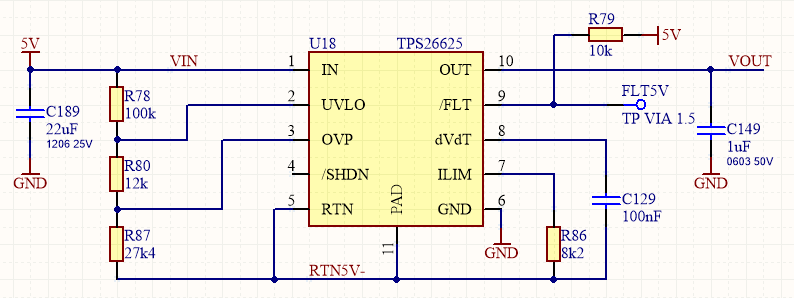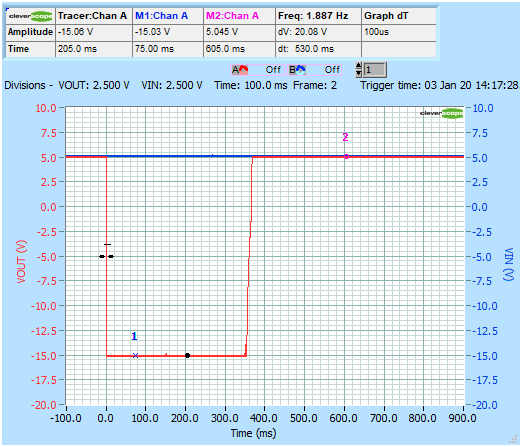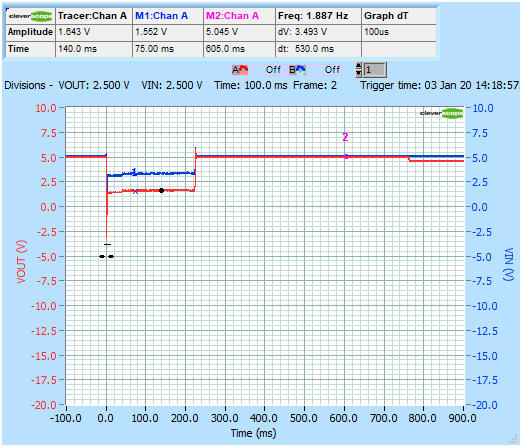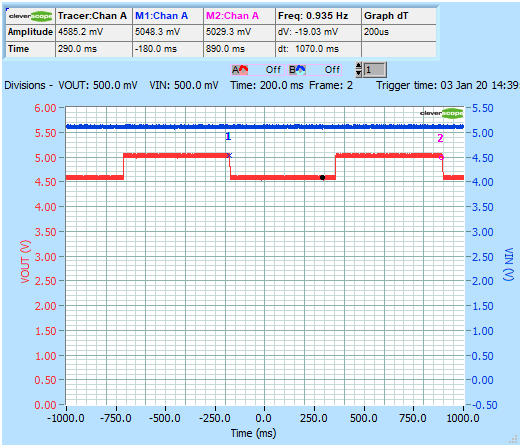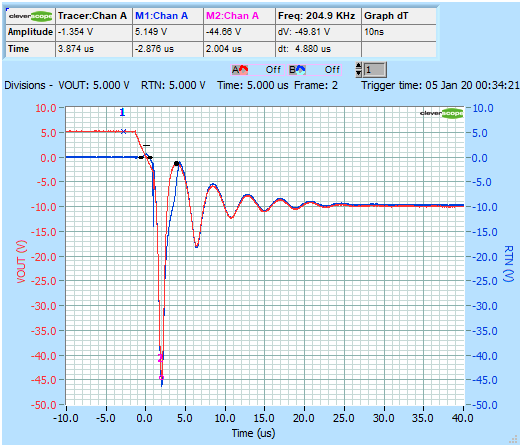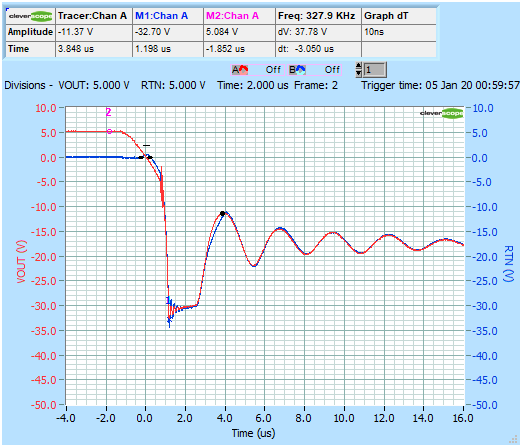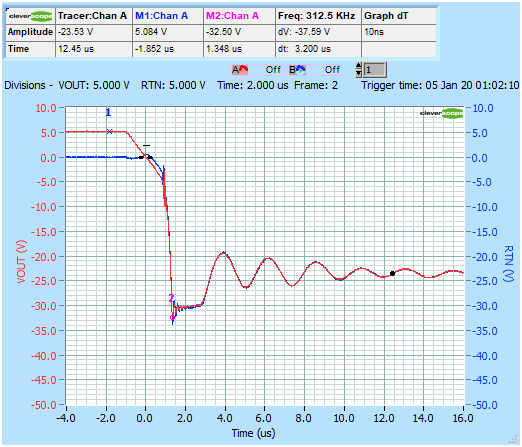Hello,
The TPS26625 is used in the following circuit with +5V on the input:
In the data sheet 9.3.4.2 Output Side Reverse Polarity Protection; it shows with 24V IN and -24V OUT that the device can survive this condition.
To test I have applied -15V for a short time to the output and works OK (red = OUT, blue = IN 5V):
-17V was also OK, but then increasing to -18V the power supply giving -18V went into current limit (1A). It looks like the TPS26625 is conducting because the 5V supply drops to 3V and OUT on the TPS26625 is at 1.5V:
After the -18V supply has been removed the TPS26625 OUT pin is cycling between 4.5V and 5V at 1Hz (1070ms):
The device seems to be damaged and replacing it with a new part get normal operation. Repeating the test at -18V results in another failure. However the data sheet shows applying -24V on the OUT pin without problem.
Why is the part failing in my test? Any help appreciated.
Thanks, Ken


